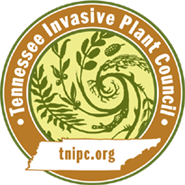Rhamnus cathartica L.
Common Buckthorn, European Buckthorn, Purging Buckthorn| Threat Level | Category |
|---|---|
| Emerging | Shrub |
|
Similar Species May be confused with the following native and/or non-native species. Landscape Alternatives lists native horticultural substitutes |
Rhamnus caroliniana Native Landscape Alternates |
|---|

Description
Height
Common buckthorn is a small tree or large shrub ranging from 10 to 25 feet tall. It is more likely to assume a shrub habit when young, developing a single trunk (up to 10 in. dia.) with age.Twigs
Thorns often occur at the tips of twigs next to terminal buds.Bark
Common buckthorn bark is brown to gray and begins to peel with age. Inner bark is orange.Leaves
Simple oval leaves are dark green with prominent veins and toothed margins. Veins curve upward strongly at leaf margins. Leaf attachment is often opposite to sub-opposite, appearing in pairs just slightly above/below each other. Some may be alternate.Flowers
Functionally dioecious, staminate (male) flowers occur on separate plants from pistillate (female) flowers. Fragrant flowers in spring are dull yellow-green with four petals and clustered along the stems. Female plants bear abundant fruit.Fruit
Fruit is a drupe (5-6mm), each containing 4 single-seeded stones, and maturing from green to black.Images
Photo: Robert Vidéki, Doronicum Kft., Bugwood.orgMore images of Rhamnus cathartica.
Life History
Rhamnus cathartica, native to Eurasia, was introduced to North America as an ornamental plant in the 1880s. Birds and mammals consume its fruit and spread the seeds. Early spring leafing and late leaf drop in autumn combined with suspected allelopathic properties shade out or deter growth of native wildflowers and woody seedlings. Chemical emodin contained in the fruit produces a laxative effect leading to the common name ‘purging buckthorn.’Habitat
Like many invasive species, common buckthorn can grow in a wide variety of habitats from dry to wet. Found mostly along disturbed roads and fields, it can also invade undisturbed communities such as moist prairies, savannas, and various woodlands and forests. It can form dense thickets to crowd out native species.Origin and Distribution
Common buckthorn is widely distributed in Canada and the United States from Alberta, Idaho, and Utah (plus California) east to the Atlantic Ocean. Tennessee and North Carolina are the southeastern-most states where it is reported. Listed as a noxious weed in Iowa, Minnesota, and Vermont, it is prohibited or banned in Connecticut, Massachusetts, and New Hampshire.Management Recommendations
Common buckthorn can be difficult to control, regenerating after cutting or burning. Seeds remain viable 2 – 6 years and hundreds may germinate below a mature plant once it is removed. The primary control objective should be prevention of seed production and dispersal. Bag and dispose of all fruit. Prescribed burns could stimulate resprouting if not planned carefully. Monitoring is essential for resprouts and seed germination.Mechanical Control
Hand Pulling: For small infestations, seedlings may be pulled easily by hand when the soil is moist. Wrench-type leverage tools work well for larger stems.Cutting and Mowing: Cutting alone will generate resprouting unless paired with herbicide application to the cut surface. In open areas, regular mowing will prevent seedling establishment.
Chemical Control
Triclopyr works for with methods below.Foliar: Spray any time after full spring leafing, taking care to minimize drift and damage to desirable plants. Treatment timing that corresponds to common buckthorn’s tendency to hold leaves into late fall minimizes damage potential. Effectiveness may be compromised if plants are under stress from drought or other factors.
Cut Stump: This method may be used at any time except spring sap flow, though some chemicals may have temperature restrictions, and it proves very useful to prevent resprouts after cutting. Monitoring is advised the following year.
Basal Bark: This method is most effective on younger stems with thin bark, spraying the bark around the stem from the ground to a height of 18 inches. It can be applied in dormancy or any time other than spring sap flow. A penetrating oil should be mixed into the chemical.
Sources
Michigan Department of Natural Resources, Invasive Species Best Control Practices
USDA PLANTS Database
Manual of Vascular Plants of Northeastern United States and Adjacent Canada, 2nd Ed. H, Henry Gleason and Arthur Cronquist, New York Botanical Garden, 1991.
Guide to the Vascular Plants of Tennessee, Tennessee Flora Committee, UT Press, 2015.
Center for Invasive Species and Ecosystem Health
